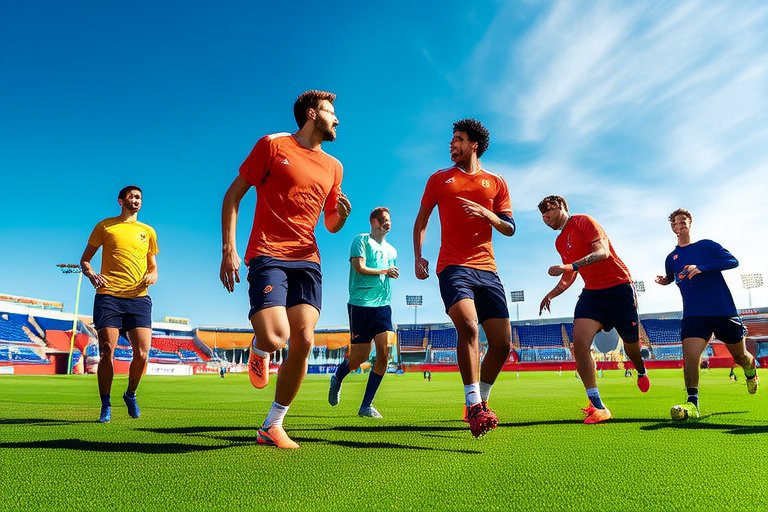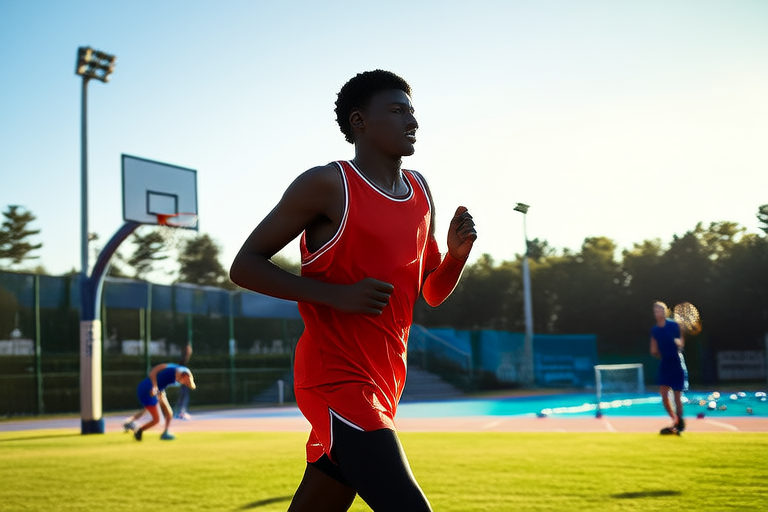Different Types of Sports: Exploring the Spectrum
Sports offer an array of activities that cater to diverse interests, abilities, and lifestyles. They can be categorized into several spectrums, including team vs individual, indoor vs outdoor, contact vs non-contact, and competitive vs recreational. Each category presents unique opportunities for physical fitness, mental well-being, and social interaction. This article explores these categories, providing examples and discussing the associated health benefits.
Team vs Individual Sports
Team sports involve multiple participants working together towards a common goal, while individual sports focus on personal achievement and performance.
Team Sports
Examples of team sports include soccer, basketball, volleyball, and rugby. These sports require collaboration, communication, and coordination among team members. Players must work together to strategize, execute plays, and support one another.
- Physical Fitness: Team sports enhance cardiovascular endurance, muscular strength, and agility. Regular participation can improve overall fitness levels and reduce the risk of chronic diseases.
- Mental Well-being: Engaging in team sports promotes teamwork, leadership skills, and emotional intelligence. Players learn to manage stress, resolve conflicts, and build resilience.
- Social Interaction: Team sports foster friendships, camaraderie, and a sense of belonging. Participants often form strong bonds with teammates and coaches, creating a supportive community.
Individual Sports
Examples of individual sports include swimming, tennis, cycling, and running. These sports emphasize personal growth, self-discipline, and perseverance. Athletes compete against themselves or others, striving to achieve personal bests.
- Physical Fitness: Individual sports can target specific areas of fitness, allowing athletes to tailor their training programs to their goals. Regular participation can lead to improved muscle tone, flexibility, and endurance.
- Mental Well-being: Engaging in individual sports promotes mindfulness, concentration, and self-confidence. Athletes develop mental toughness and learn to cope with challenges and setbacks.
- Social Interaction: While individual sports may not involve direct competition with others, they still provide opportunities for social interaction through clubs, events, and competitions. Athletes can connect with like-minded individuals and share experiences.
Indoor vs Outdoor Sports
Indoor sports take place in enclosed spaces, while outdoor sports occur in natural environments.
Indoor Sports
Examples of indoor sports include badminton, table tennis, gymnastics, and rock climbing. These sports often require specialized equipment and facilities, offering year-round opportunities regardless of weather conditions.
- Physical Fitness: Indoor sports can provide a full-body workout, improving cardiovascular health, muscular strength, and flexibility. Regular participation can also help maintain a healthy weight and reduce the risk of injuries.
- Mental Well-being: Engaging in indoor sports can promote relaxation, stress relief, and cognitive function. The controlled environment of indoor sports allows athletes to focus on their performance and technique.
- Social Interaction: Indoor sports often involve structured sessions or classes, providing opportunities for social interaction and networking. Participants can meet new people, share experiences, and form lasting friendships.
Outdoor Sports
Examples of outdoor sports include hiking, mountain biking, kayaking, and surfing. These sports expose participants to nature, offering fresh air, sunlight, and scenic views. Outdoor sports often require minimal equipment and can be enjoyed in various settings.
- Physical Fitness: Outdoor sports can improve cardiovascular endurance, muscular strength, and flexibility. They also promote balance, coordination, and agility. Regular participation can help maintain a healthy weight and reduce the risk of chronic diseases.
- Mental Well-being: Engaging in outdoor sports can enhance mood, reduce anxiety, and improve sleep quality. The exposure to nature and physical activity can have a positive impact on mental health.
- Social Interaction: Outdoor sports often involve group activities or guided tours, providing opportunities for social interaction and networking. Participants can meet new people, share experiences, and form lasting friendships.
Contact vs Non-Contact Sports
Contact sports involve physical interactions between players, while non-contact sports avoid direct body-to-body collisions.
Contact Sports
Examples of contact sports include football, rugby, hockey, and wrestling. These sports require physical strength, agility, and strategic thinking. Players must be prepared for collisions and tackles, which can increase the risk of injuries.
- Physical Fitness: Contact sports can provide a high-intensity workout, improving cardiovascular endurance, muscular strength, and agility. Regular participation can also help maintain a healthy weight and reduce the risk of chronic diseases.
- Mental Well-being: Engaging in contact sports can promote teamwork, leadership skills, and emotional intelligence. Players learn to manage stress, resolve conflicts, and build resilience.
- Social Interaction: Contact sports foster friendships, camaraderie, and a sense of belonging. Participants often form strong bonds with teammates and coaches, creating a supportive community.
Non-Contact Sports
Examples of non-contact sports include golf, archery, sailing, and rowing. These sports prioritize skill, precision, and strategy over physical contact. Non-contact sports can be less intimidating for beginners and offer a lower risk of injuries.
- Physical Fitness: Non-contact sports can improve cardiovascular endurance, muscular strength, and flexibility. They also promote balance, coordination, and agility. Regular participation can help maintain a healthy weight and reduce the risk of chronic diseases.
- Mental Well-being: Engaging in non-contact sports can enhance concentration, focus, and cognitive function. The lack of physical contact allows athletes to focus on their performance and technique.
- Social Interaction: Non-contact sports often involve structured sessions or classes, providing opportunities for social interaction and networking. Participants can meet new people, share experiences, and form lasting friendships.
Competitive vs Recreational Sports
Competitive sports involve formalized rules, rankings, and tournaments, while recreational sports prioritize enjoyment, fitness, and leisure.
Competitive Sports
Examples of competitive sports include Olympic events, professional leagues, and national championships. These sports require dedication, discipline, and a strong commitment to training and competition.
- Physical Fitness: Competitive sports can provide a high-intensity workout, improving cardiovascular endurance, muscular strength, and agility. Regular participation can also help maintain a healthy weight and reduce the risk of chronic diseases.
- Mental Well-being: Engaging in competitive sports can promote teamwork, leadership skills, and emotional intelligence. Players learn to manage stress, resolve conflicts, and build resilience.
- Social Interaction: Competitive sports foster friendships, camaraderie, and a sense of belonging. Participants often form strong bonds with teammates and coaches, creating a supportive community.
Recreational Sports
Examples of recreational sports include weekend leagues, pick-up games, and community events. These sports prioritize enjoyment, fitness, and leisure, offering opportunities for casual participation and social interaction.
- Physical Fitness: Recreational sports can improve cardiovascular endurance, muscular strength, and flexibility. They also promote balance, coordination, and agility. Regular participation can help maintain a healthy weight and reduce the risk of chronic diseases.
- Mental Well-being: Engaging in recreational sports can enhance mood, reduce anxiety, and improve sleep quality. The relaxed atmosphere of recreational sports allows participants to focus on having fun and enjoying the experience.
- Social Interaction: Recreational sports often involve group activities or informal gatherings, providing opportunities for social interaction and networking. Participants can meet new people, share experiences, and form lasting friendships.
Conclusion
The world of sports offers a wide spectrum of activities, each with its own unique benefits and challenges. Whether you prefer team or individual sports, indoor or outdoor environments, contact or non-contact play, and competitive or recreational settings, there is a sport out there for everyone. By exploring the spectrum of sports, you can find activities that suit your preferences and lifestyle, promoting physical fitness, mental well-being, and social interaction. So, why not step outside your comfort zone and try something new? You might just discover a passion that enhances your life in unexpected ways.










